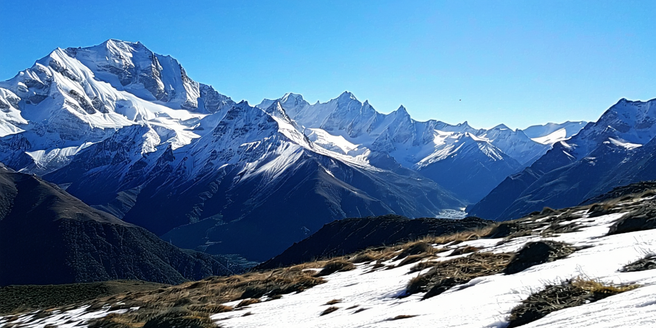
Understanding High Altitude Climate Changes
High altitudes are characterized by thinner air and lower oxygen levels, which significantly affect the climate. These areas typically experience lower temperatures with rapid changes in weather conditions. The air is drier due to decreased atmospheric pressure, leading to drier skin and respiratory passages. Additionally, high altitudes often have more intense solar radiation, as the thinner atmosphere filters out less UV radiation. Seasonal changes can be more pronounced, and weather patterns may often result in sudden storms. Understanding these climatic shifts is crucial for adaptation, especially for newcomers who may face physiological changes that affect their well-being. Residents need to be aware of how these unique climate characteristics can influence daily activities and health.
Common Allergens Found at High Altitudes
While high altitudes might seem free of allergens due to their pristine environment, they still harbor common allergens. Notably, tree pollens from species adapted to these elevations can trigger allergic reactions. The lighter, drier air can make pollen travel farther, affecting areas even away from the source. Additionally, high-altitude regions might have unique molds proliferating in snowy conditions or damp zones near melting snow caps. Dust mites may be fewer, but they persist in homes and shelters insulated against the cold. Awareness and identification of these allergens are essential to mitigate allergic responses. Understanding the local flora and fauna can help visitors and residents alike anticipate and manage potential allergy triggers.
The Impact of Altitude on Allergy Symptoms
Living at high altitudes can alter the way allergy symptoms manifest. Lower air pressure and humidity can exacerbate respiratory issues, making symptoms more pronounced for allergy sufferers. The dry air can cause nasal passages to become irritated, intensifying sneezing, coughing, and congestion. Furthermore, the increased UV exposure can lead to skin sensitivity and rashes. Interestingly, some individuals find relief from hay fever, as fewer plants may release pollen at these elevations. However, the specific allergens present can lead to unique challenges. Adjusting to these factors requires acclimatization and possibly altering allergy management strategies tailored to high-altitude conditions.
Managing Allergies in Mountainous Regions
Effectively managing allergies in mountainous areas requires a multifaceted approach. Regular monitoring of local pollen forecasts can help plan activities on days with lower allergen levels. Using air purifiers indoors aids in reducing airborne particles, allowing respite from symptoms. Wearing protective gear such as sunglasses and masks when outdoors minimizes exposure to allergens and UV rays. Employing antihistamines is advisable, but it’s crucial to consult a healthcare professional familiar with high-altitude conditions to customize treatment plans. In severe cases, relocating temporary or permanent accommodations to more allergen-friendly environments may be considered. A proactive stance on allergy management helps significantly reduce discomfort and improve quality of life.
Preventative Measures for Altitude Allergies
Prevention is key in managing altitude allergies. Staying indoors during peak pollen seasons reduces exposure. Sealing homes against drafts diminishes the influx of allergens. Regular cleaning minimizes dust and mold buildup. For those susceptible to pollen, installing HEPA filters and using dehumidifiers can significantly decrease allergens indoors. Wearing masks and sunglasses can help when venturing outside, especially during windy conditions when pollen disperses more widely. Educating oneself about the local pollen and allergen cycles facilitates effective planning. Incorporating these measures into daily routines can notably decrease allergy symptoms, maintaining health and comfort year-round at higher altitudes.
When to Seek Medical Help for Altitude Allergies
Understanding when to seek medical assistance is crucial for managing altitude-related allergies. If symptoms persist despite preventative measures or if they intensify to disrupt daily life, professional input is essential. Indicators like severe breathing difficulties, unexpected skin reactions, or symptoms unresponsive to over-the-counter treatments warrant a healthcare consultation. A physician can determine if symptoms are indeed allergy-related or indicative of altitude sickness or other conditions. They may recommend specialized treatments or interventions like allergy shots tailored to the specific environment. Prompt medical advice prevents complications, ensuring effective management and maintaining well-being amidst the challenges of high-altitude living.
